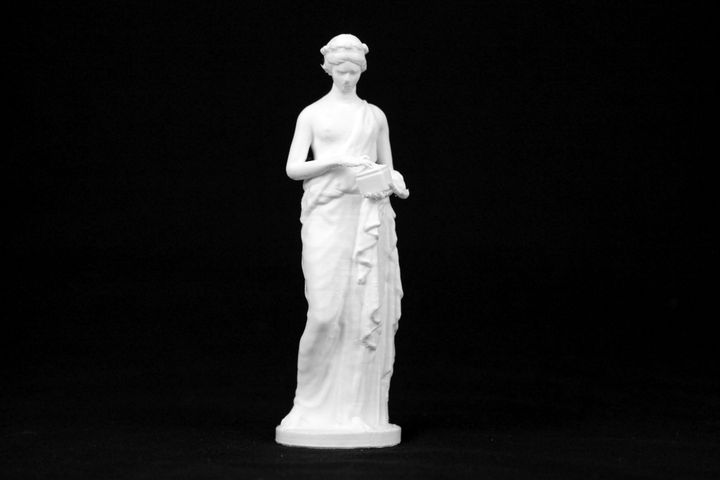
Reklama
3D tiskárny



AONN.cz
Sp┼Ö├ítelen├ę Weby
|
3D modely ARTPandora at The V&A, London

In Greek mythology Pandora was the first woman on earth. Jupiter gave her a box with a strict instruction not to open it. Nevertheless, she did so and all the evils and misery contained in the box were released upon mankind. This marble sculpture was carved by John Gibson (1790-1866) who spent more of his working life in Rome and was a great admirer of Canova. The Pandora myth first appears in lines 560–612 of Hesiod's poem in epic meter, the Theogony (ca. 8th–7th centuries BC), without ever giving the woman a name. After humans received the stolen gift of fire from Prometheus, an angry Zeus decides to give humanity a punishing gift to compensate for the boon they had been given. He commands Hephaestus to mold from earth the first woman, a "beautiful evil" whose descendants would torment the human race. After Hephaestus does so, Athena dresses her in a silvery gown, an embroidered veil, garlands and an ornate crown of silver. This woman goes unnamed in the Theogony, but is presumably Pandora, whose myth Hesiod revisited in Works and Days. When she first appears before gods and mortals, "wonder seized them" as they looked upon her. But she was "sheer guile, not to be withstood by men." Hesiod elaborates (590–93): From her is the race of women and female kind:of her is the deadly race and tribe of women wholive amongst mortal men to their great trouble,no helpmates in hateful poverty, but only in wealth. Hesiod goes on to lament that men who try to avoid the evil of women by avoiding marriage will fare no better (604–7): He reaches deadly old age without anyone to tend his years,and though he at least has no lack of livelihood while he lives,yet, when he is dead, his kinsfolk divide his possessions amongst them. Hesiod concedes that occasionally a man finds a good wife, but still (609) "evil contends with good." n├íhodn├Ż v├Żb─Ťr model┼»
|
©Ofrii 2012
| |||